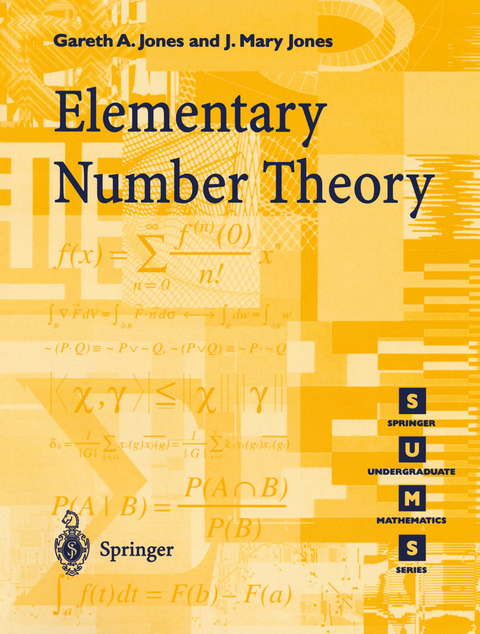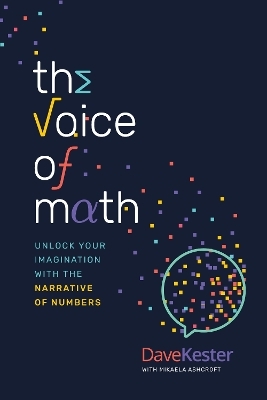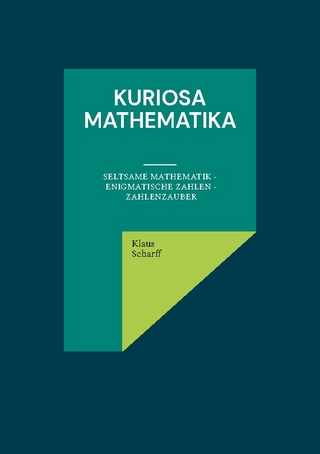Elementary Number Theory
Springer Berlin (Verlag)
978-3-540-76197-6 (ISBN)
1. Divisibility.- 1.1 Divisors.- 1.2 Bezout's identity.- 1.3 Least common multiples.- 1.4 Linear Diophantine equations.- 1.5 Supplementary exercises.- 2. Prime Numbers.- 2.1 Prime numbers and prime-power factorisations.- 2.2 Distribution of primes.- 2.3 Fermat and Mersenne primes.- 2.4 Primality-testing and factorisation.- 2.5 Supplementary exercises.- 3. Congruences.- 3.1 Modular arithmetic.- 3.2 Linear congruences.- 3.3 Simultaneous linear congruences.- 3.4 Simultaneous non-linear congruences.- 3.5 An extension of the Chinese Remainder Theorem.- 3.6 Supplementary exercises.- 4. Congruences with a Prime-power Modulus.- 4.1 The arithmetic of ?p.- 4.2 Pseudoprimes and Carmichael numbers.- 4.3 Solving congruences mod (pe).- 4.4 Supplementary exercises.- 5. Euler's Function.- 5.1 Units.- 5.2 Euler's function.- 5.3 Applications of Euler's function.- 5.4 Supplementary exercises.- 6. The Group of Units.- 6.1 The group Un.- 6.2 Primitive roots.- 6.3 The group Une, where p is an odd prime.- 6.4 The group U2e.- 6.5 The existence of primitive roots.- 6.6 Applications of primitive roots.- 6.7 The algebraic structure of Un.- 6.8 The universal exponent.- 6.9 Supplementary exercises.- 7. Quadratic Residues.- 7.1 Quadratic congruences.- 7.2 The group of quadratic residues.- 7.3 The Legendre symbol.- 7.4 Quadratic reciprocity.- 7.5 Quadratic residues for prime-power moduli.- 7.6 Quadratic residues for arbitrary moduli.- 7.7 Supplementary exercises.- 8. Arithmetic Functions.- 8.1 Definition and examples.- 8.2 Perfect numbers.- 8.3 The Mobius Inversion Formula.- 8.4 An application of the Mobius Inversion Formula.- 8.5 Properties of the Mobius function.- 8.6 The Dirichlet product.- 8.7 Supplementary exercises.- 9. The Riemann Zeta Function.- 9.1 Historical background.- 9.2 Convergence.- 9.3 Applications to prime numbers.- 9.4 Random integers.- 9.5 Evaluating ?(2).- 9.6 Evaluating ?(2k).- 9.7 Dirichlet series.- 9.8 Euler products.- 9.9 Complex variables.- 9.10 Supplementary exercises.-10. Sums of Squares.- 10.1 Sums of two squares.- 10.2 The Gaussian integers.- 10.3 Sums of three squares.- 10.4 Sums of four squares.- 10.5 Digression on quaternions.- 10.6 Minkowski's Theorem.- 10.7 Supplementary exercises.- 11. Fermat's Last Theorem.- 11.1 The problem.- 11.2 Pythagoras's Theorem.- 11.3 Pythagorean triples.- 11.4 Isosceles triangles and irrationality.- 11.5 The classification of Pythagorean triples.- 11.6 Fermat.- 11.7 The case n = 4.- 11.8 Odd prime exponents.- 11.9 Lame and Kummer.- 11.10 Modern developments.- 11.11 Further reading.- Solutions to Exercises.- Index of symbols.- Index of names.
From the reviews:
BULLETIN OF MATHEMATICS BOOKS
"?as a nice concluding chapter on Fermat? Last Theorem, with a brief discussion on the coup de grace."
G.A. Jones and J.M. Jones
Elementary Number Theory
"A welcome addition . . . a carefully and well-written book."-THE MATHEMATICAL GAZETTE
"This book would make an excellent text for an undergraduate course on number theory."
-MATHEMATICAL REVIEWS
| Erscheint lt. Verlag | 14.1.1998 |
|---|---|
| Reihe/Serie | Springer Undergraduate Mathematics Series |
| Zusatzinfo | XIV, 302 p. |
| Verlagsort | London |
| Sprache | englisch |
| Maße | 178 x 235 mm |
| Gewicht | 472 g |
| Themenwelt | Mathematik / Informatik ► Mathematik ► Arithmetik / Zahlentheorie |
| Mathematik / Informatik ► Mathematik ► Wahrscheinlichkeit / Kombinatorik | |
| Schlagworte | Calculus • cryptography • Mersenne prime • Number Theory • Prime • Prime number • Riemann zeta function • Zahlentheorie |
| ISBN-10 | 3-540-76197-7 / 3540761977 |
| ISBN-13 | 978-3-540-76197-6 / 9783540761976 |
| Zustand | Neuware |
| Haben Sie eine Frage zum Produkt? |
aus dem Bereich




